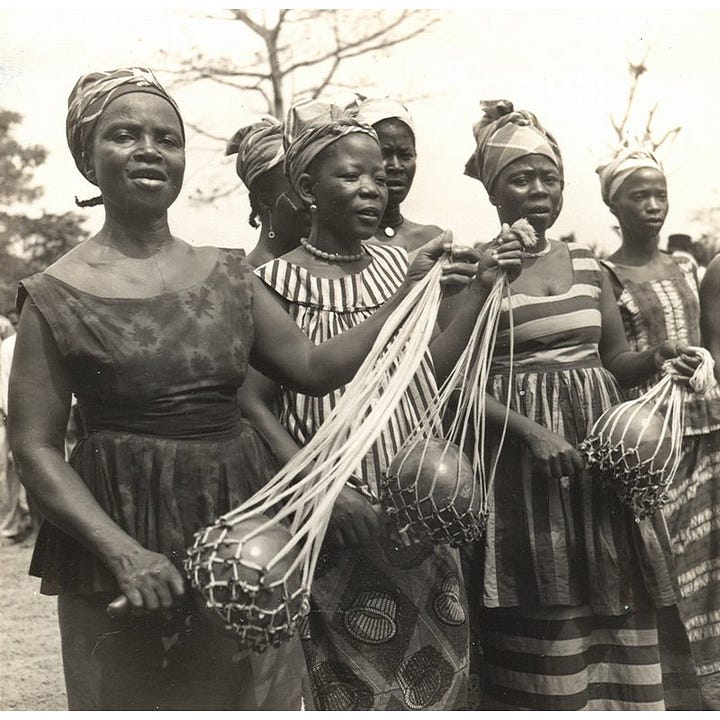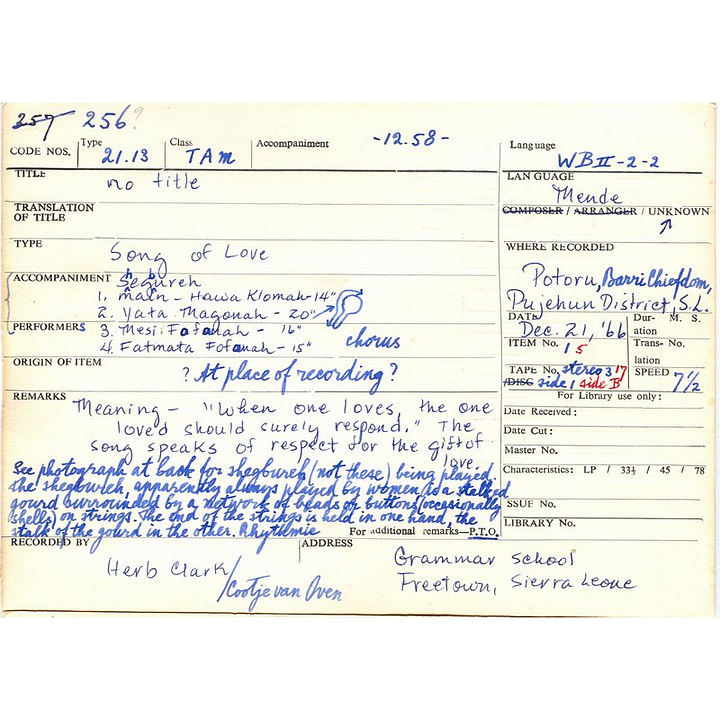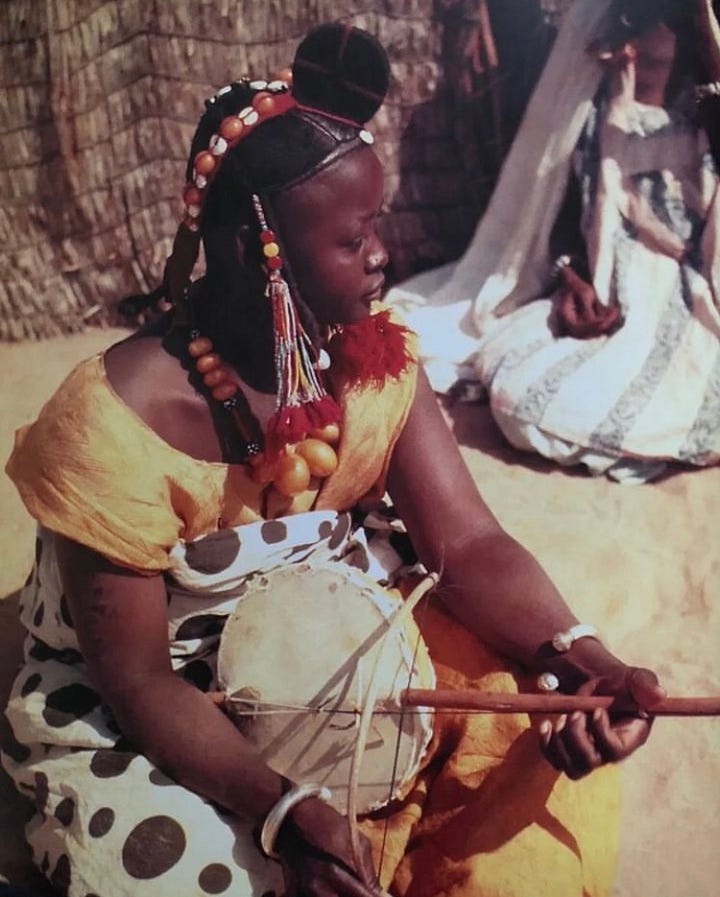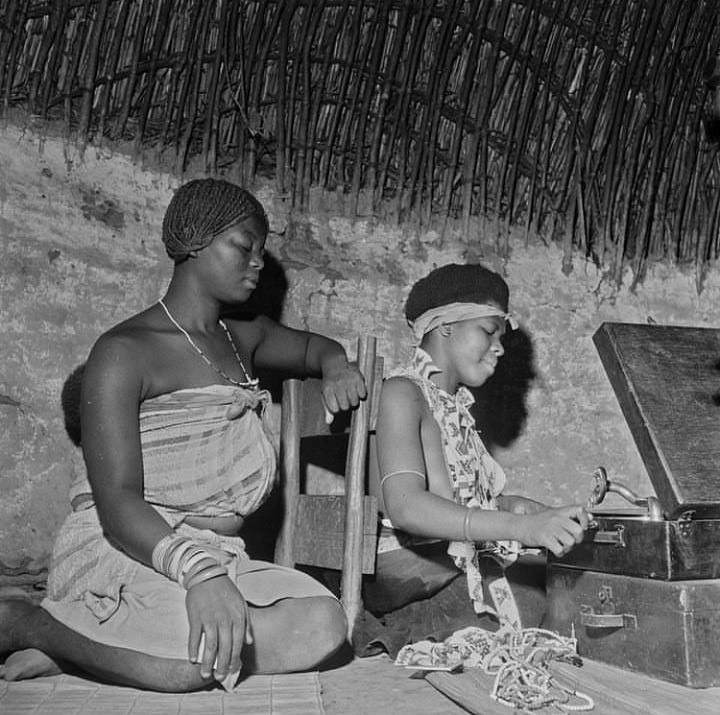

won't you celebrate with me what i have shaped into a kind of life? i had no model. born in babylon both nonwhite and woman what did i see to be except myself? i made it up here on this bridge between starshine and clay, my one hand holding tight my other hand; come celebrate with me that everyday something has tried to kill me and has failed. -Lucille Clifton
I find myself here on this bridge between starshine and clay. My one hand holding tight my other hand, I find myself excited to celebrate the lives inhabited and shaped by song. And in all honestly, I also stand intimated yet delightfully, reverently compelled forward by the immensity of this work. The work of remembering and recalling how African women sang (and still sing), danced (and still dance), and told (and still tell) us about their worlds and who they were (and still are) through melody and rhythm.
These elements of standing between starshine and clay — palming what is grounded and heavenly — speak to me of the nuance and duality that surrounds memory work. It is challenging, demanding work, not to be taken lightly, yet at the same time asks to be done with a spirit of play and joy. It negates linear thinking surrounding the temporal and the spatial. This work demands a negation of relying on western hegemonic, hagiographic theories and practices surrounding the lives that are held within archives and history. It calls us to communally disrupt the sole centering of the individual who is often seen apart/away from or above the collective. It beckons us to dream and imagine. It summons us to peer between the lines, paying attention to what is shimmering unsaid, unseen, and unheard.
After hitting publish on the first introduction piece, I realised that there was still so much that I needed to share regarding the birth of this work, the words that breathed it into life, the songs that nurture it, and the dreams that unfurl it. In this piece, I hope to begin to limn out the framework of what I hope to explore and imagine. I believe that this will continually be expanded and will continue to morph in tandem with time.


I came into sonic memory work by creating the archival space Wer Jokenya in 2019. Wer Jokenya, which means “music for the people of Kenya” in Dholuo, arose from the desire to see my personhood in conversation with the long lineage of people that shaped Kenyan music history. While building and curating this archive, I noticed a silence that I found to be both insistent and demanding, and this was the lack of knowledge surrounding the role women played in shaping Kenyan soundscapes. Over the years this silence has only grown louder in its insistence. This insistence birthed the personal need to understand the structural layers that allow for some voices to be heard and others to be repressed, and to engage with this beyond the imperial borderlines that created the nation-state of Kenya.
In her writing about “Central figures who never emerge as heroes in dominant articulations of history,” the ethereal essayist, vinyl selector, and cultural worker Nombuso Mathibela opens with three crucial questions surrounding this structural silence:
“How do we make sense of people that we know little about?”
“How do we read and engage central figures in music spaces and communities who never emerge as heroes in the dominant articulations of history?”
“In our quest to make sense of the real and lived experiences of invisibility that women have experienced, how do we do this without fully succumbing to their negation or further unseeing them?”
Mathibela’s deeply insightful words contain an irresistible provocation that continues to make me think about the posture and methodology that we need to move toward when talking about African women’s sonics. It is an insistence on moving with care-filled deliberateness in thought and language, working “within a feminist analysis, without locking myself back into the spectacle inherent in how we talk about women in music1.”


Holding Mathibela’s words as part of the fertile ground from which the stories, questions, ideas, and dreams surrounding this space will emerge, here few more things I am tending to as I continue to build the framework for where are those songs?:
This being an exercise in approaching history from a creative, curatorial, and archival perspective
By placing together the words of various thinkers who have written about the relationship between women and song. It embraces polyperspectivity interacting with musical history through physically embodied memory, visual culture (photography and cinema), playlists/mixes, and adornment/style. It is a curatorial exercise moving within the words of Stefanie Jason who states that this method “Draws from the archive to provoke the institutional memory…[and] incite the limitations and arbitrariness of official archives, and engage divergent narratives to such a fragmented history.2”
Honoring the sacred and operating within the opaque
Keeping in line with Edouard Glissant’s insistence on demanding “the right to opacity.” Flowing in the words of Saidiya Hartman - “I have endeavored to represent the lives of the nameless and the forgotten, to reckon with loss, and to respect the limits of what cannot be known.3” With this same insistent truth echoed by Daphne Brooks who declares, “The beloved figures who animate our dreams and fuel our inquisitive desires do, nonetheless, hold the right to claim their own obscure remains.4”
An act of care that holds the violence, complications, pains, challenges, and paradoxes of memory work with a softness embodied within an insistence on beauty.
Grasping on to Audre Lorde’s Uses of the Erotic and Hartman’s words that remind us that, “Beauty as both a practice and a method might enable some kind of redress right? That might be a possible antidote to the violence that is a part of the everyday. I think that artistic practice becomes the exercise of imagining beauty and what it might make possible in the world.”
Seeking to question why and how we remember and seeking to trouble and complicate oversimplified narratives, but also seeking to engage with these from a Pan-African perspective, honoring intersectional sonic histories that move within the Indian and Atlantic bodies of waters
Again calling in the work of Saidiya Hartman particularly that of critical fabulation. This is defined by Jason as, “the combining of historical and archival research with critical theory and fictional narrative to fill in the blanks left in the historical record.”
Working with the musical methodology of liner notes as a process of mapping out knowledge, and of referencing and thinking about citing as an extension of ancestry
"Citation as storytelling, not ownership. citation not because we believe in the ownership of ideas, but citation as a form of storytelling and lineage5." These words were a reframe gifted to me by the Teaching and Learning participants of the School for Poetic Computation.

And so “come won’t you celebrate with me…here on this bridge between starshine and clay?” There is so much to see, listen to, and learn from and I can’t wait to do it together with you! And as a sweet close, here is the melodic extension to these words, may it fill your heart with as much healing joy as it does mine.
Sonically yours,
xx
LINER NOTES 💌 🎙
Things I referenced:
On central figures who never emerge as heroes in dominant articulations of history - Nombuso Mathibela
CENTERING SILENCES: The Elusive Photographic Archive of Mabel Cetu - Stefanie Jason
For Opacity - Edouard Glissant
Venus in Two Acts - Saidiya Hartman
Liner Notes for the Revolution: The Intellectual Life of Black Feminist Sound by Daphne A. Brooks
The Instagram archive “(at)vintageafricanwomen.” It is honestly one of my most favorite corners on the interwebs!
Additional things I have been loving:
‘On central figures who never emerge as heroes in dominant articulations of history’ Nombuso Mathibela
CENTRING SILENCES The Elusive Photographic Archive of Mabel Cetu
Venus in Two Acts
Liner Notes for the Revolution: The Intellectual Life of Black Feminist Sound
Teaching and Learning as "PRIMITIVE HYPERTEXT"






Love this! The images took me back in time…
This was absolutely stunning! I read both this and your first post and cried through both. Thank you so much for sharing with us!